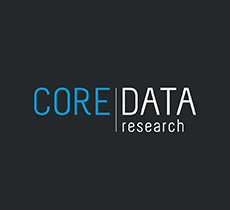Financial advisers are in prime position to cater to a booming demand for services as an unprecedented $3.9 trillion of wealth prepares to be transferred between generations – but only if business models and advice offerings adapt to appeal to consumers.
Research by CoreData suggests that Baby Boomers are about twice as likely as the general population to be classified has high-net-worth (HNW) individuals. Overall, about 1 per cent of the general population are HNW individuals, compared to 2 per cent of the Baby Boomer generation.
About four million “average” baby boomers collectively control about $3.3 billion of wealth, with average net inevitable assets of about $400,000 each. Meanwhile, around 78,300 Baby Boomers collectively control about $600 billion of assets, with net inevitable assets of about $2.6 million each.
Opportunity knocks
Opportunities for advice arise to address the greatest fears of the retiring rich – namely, that their wealth will not be distributed to those they intend to receive it; that they pay too much tax on the transfer of assets to younger generations; and that the younger generations may misuse their inherited wealth. Advisers would be well served to speak to wealth Baby boomer clients now about engage younger generations in the wealth transfer conversation.
As older Australians contemplate seeking advice to allay these fears financial advice business models must evolve to remain relevant and appealing. CoreData’s research suggests five models will emerge – with variations on these themes to carte to the specific needs of target markets:
- The high-net-worth practice model
- The large corporate financial planning business
- The small, one- to two-person practice
- The large, salaried network
- The mass-market, technology-based scaled-advice model
As things currently stand, there are four broad fee models in play in the advice profession – with some advice firms embracing more than one approach, and using a mix that most appeals to or most closely suits their target market’s preferences.
- Fee for advice
- Fixed initial fee plus percentage of funds under management
- Commissions and product payments
- Broking/transactional fees
What the future holds
Over the next 12 months to three years, these models will move away from the percentage of funds under management model, and towards a flat-fee for initial and ongoing advice. Product will be separated from advice, and payments from products will be phased out of the advice value chain. Clients will be afforded a choice of fee models; and pay-as-you-go options will emerge, particularly to support the scaled advice, technology-based offers.
Ddvice will predominantly be delivered on a flat/fixed fee basis, with the collection of fees separate from product – paid for directly by consumers. As further forms of commission are banned or phased out, the resultant margin pressures on some businesses will be addressed by technology solutions.
And it won’t only be financial advice practices whose fee structures change to accommodate the evolving preferences of consumers. Licensees, too, will rethink how they package services and support to advisers, and CoreData’s research suggests three basic models will emerge – again, with variations on the theme to tailor offers.
Click here to download a summary of the Wealth Transfer and New Model Advice presentation.


